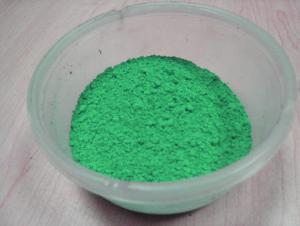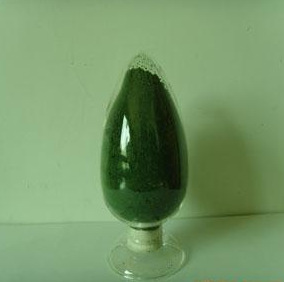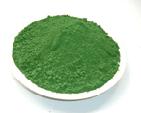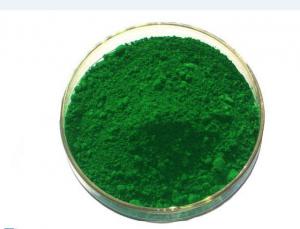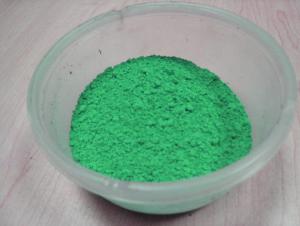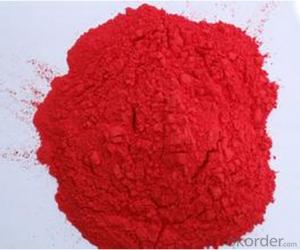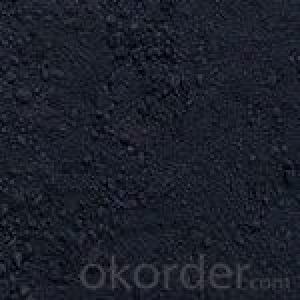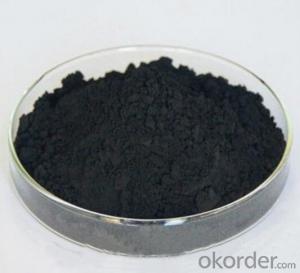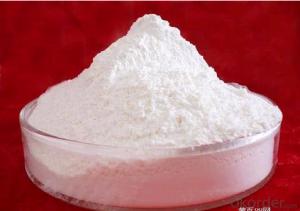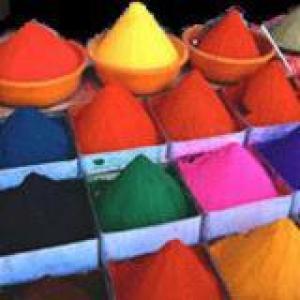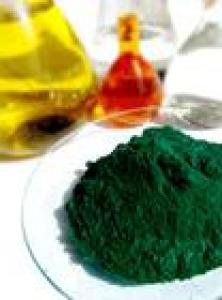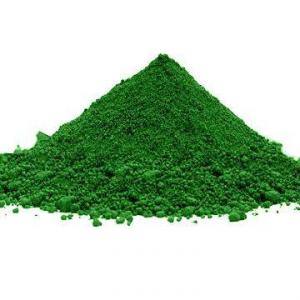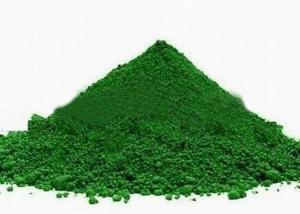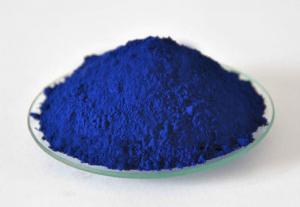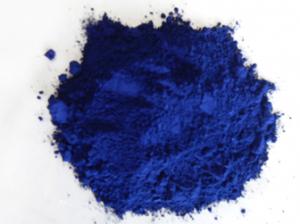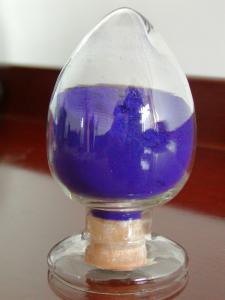Inorganic Green Pigments Chrome Oxide Green Ceremic Grade
- Loading Port:
- Tianjin Port
- Payment Terms:
- TT or LC
- Min Order Qty:
- 1 Metric Ton m.t.
- Supply Capability:
- 8000MT Per Year m.t./month
OKorder Service Pledge
OKorder Financial Service
You Might Also Like
Product Details of Chrome Oxide Green Ceremic Grade
1. Product Name: Chrome Oxide Green
2. Molecular Formula: Cr2O3
3. HS Code: 2819900000
4. CAS No. : 1308-38-9
5. Appearance: green powder
6. Specifications: (Quality Standard: HG/T 2775-1996)
Packing of Chrome Oxide Green :
25 kg/ kraft , or PP bag , or as your requirements .
Usage of Chrome Oxide Green :
Mainly used in paint, glass, ceramics, building materials colorants, printing ink, metal polishing, smelting metal chromium, fire-proof material, etc.
Ceramic Grade:
Item | Index | ||
Excellent Grade | First Grade | Qualified Grade | |
Cr2O3 | ≥ 99.0% | ≥ 98.0% | ≥ 97.0% |
Soluble Chrome | ≤ 0.03% | ≤ 0.03% | ≤ 0.03% |
105°C Volatile Matter | ≤ 0.3% | ≤ 0.3% | ≤ 0.3% |
Water Soluble | ≤ 0.1% | ≤ 0.4% | ≤ 0.7% |
Moisture | ≤ 0.15% | ≤ 0.3% | ≤ 0.5% |
PH of Water Solution | 6-8 | 5-8 | 5-8 |
Oil Absorption (g/ 100g) | 15-25 | 15-25 | 15-25 |
Residue on Sieve of 0.045 mm | ≤ 0.1% | ≤ 0.3% | ≤ 0.5% |
Relative tinting strength | Comply with the requirements | ||
Chroma | Comply with the requirements | ||
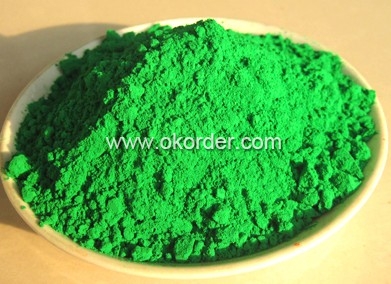

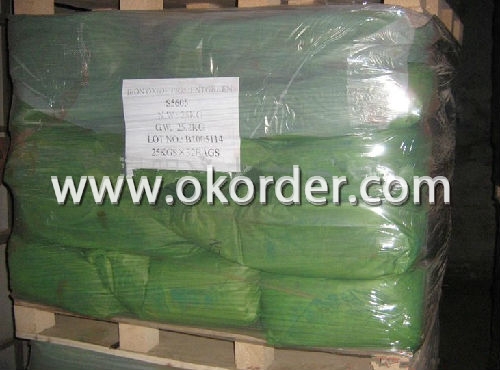
- Q: I need to find powdered paint or pigment that I can throw, for some photographs.Preferably cheap, and that wouldn't stain skin.I've looked into powder paint, though this tends to stain skin for about a week.Thanks :)
- There are diverse varieties of eyeshadows, which means diverse finishes. Matte, working example, would be very, very centred interior the colour, wherein as a lustre will reveal up sheer, and additionally you will possibly be able to barley get any precise pigment out of it. MAC paint is for a base, or primer on your eye lids, which means you will possibly be able to placed that on until now you place any eye liner, shadow, pigment, etc. based on the colour paint you make the main of, it would strengthen or tone down and eye shadow or pigment then you definately definately challenge on the lid. Pigment is a very, very centred loose powder. You superb want a tiny, tiny pinch of it, and the containers they arrive in, circulate a verrrry sturdy distance. The purpose persons customarily use pigments as a shadow alternative, may be in view that the the two MAC does now not deliver the precise colour of the paticular pigment in a shadow, or they are applying it to extend shadows, or finally, they are mixing it with shadows to create diverse colors. desire that's assisting.
- Q: What is the difference between dyes and pigments? Could you give some examples of each one please.
- Dye is used to change the color of things, like cloth. A pigment is like the color and texture of your skin. Or the color in paint.
- Q: Please and thank you, it doesn't say so on the website.
- Mac Pigment Ingredients
- Q: Can some one suggest chemical pigments that can be easily made from chemicals available in a chemistry lab for a project?I need the name of the pigment, reactants required and chemical equations of reactions involved.I need atleast 5 pigments
- Typical pigments: carbon black (charcoal) titanium dioxide red iron oxide white lead cadmium red cadmium orange cadmium yellow
- Q: does photosythesis requier pigment moulecuels?
- Pigments are needed, because they absorb the energy from the light. Different chlorophylls absorb different wavelengths. When pigment absorbs the photon, it releases an electron, which is used in photosynthesis as energy. Without pigment the light would just past through or reflect and no energy would be left to the cell to be turned into sugar.
- Q: Does anyone know its chemical formula or constituents ?
- Epona's answer is extremely sturdy. in case you seem up colour institutions you will locate diverse institutions reckoning on who has written them and what structures they're drawing from. yet you'll be able to desire to continually use institutions that make experience to you. case in point - you will in all probability locate that easy blue is the colour linked with peace. yet reckoning on what form of peace you're going for you may go with a diverse colour. possibly purple if that is for peace in the kin or with acquaintances, pink if that is religious in nature, or eco-friendly if that is physique appropriate. The institutions I genuinely tend to circulate with are: pink - lust, action, means, braveness Orange - creativity, braveness, means (extra innovative form than the pink). Yellow - issues bearing on the concepts (like possibly you have have been given a attempt to earnings for) or psychological suggestion. easy eco-friendly - prosperity darkish eco-friendly - therapeutic easy Blue - peace, tranquility darkish Blue - desires, on occasion suggestion pink - issues coping with the religious White - purification and can be a stand in for extremely just about something Black - liberating negativity, banishing purple - love, friendship, kin i do no longer think there is any colour that would desire to be prevented. yet I often use a diverse affiliation than what i've got listed. And my institutions are in user-friendly terms valid for yet somebody else in the event that they make experience to them. i exploit white candles maximum many times as I continually have them handy and that they might continually be spiced up with diverse oils this is something I do very often.
- Q: thinking about the main role of pigments in photosynthesis...? explain how the pigments in colored objects suc?
- photosynthetic pigment or antenna pigment is a pigment that is present in chloroplasts or photosynthetic bacteria and captures the light energy necessary for photosynthesis. Green plants have five closely-related photosynthetic pigments (in order of increasing polarity): Carotene - an orange pigment Xanthophyll - a yellow pigment Chlorophyll a - a blue-green pigment Chlorophyll b - a yellow-green pigment Phaeophytin a[1] - a gray-brown pigment Phaeophytin b[1] - a yellow-brown pigment Chlorophyll a is the most common of the six, present in every plant that performs photosynthesis. The reason that there are so many pigments is that each absorbs light more efficiently in a different part of the spectrum. Chlorophyll a absorbs well at a wavelength of about 400-450 nm and at 650-700 nm; chlorophyll b at 450-500 nm and at 600-650 nm. Xanthophyll absorbs well at 400-530 nm. However, none of the pigments absorbs well in the green-yellow region, which is responsible for the abundant green we see in nature.
- Q: Can someone describe the role of accessory pigments in photosynthesis?
- Accessory pigments help the plant absorb energy from different wavelengths of light other than those that are absorbed by the main pigment chlorophyl.
- Q: Does anyone know of a way to change the color of your iris' permanently?I've been researching for a while, and have not been able to find anything! I already know about newcoloriris (surgery), but that had loads of side effects. I already know about contacts (ive had them on and off for a while).I don't see how with all the science and technology in the world, there's no way to simply lighten your eye color. We can literally dye our skin, we can tattoo our eyeballs, we can do almost ANYTHING in the world today. So, how has nobody discovered a way to change eye color.?I'm aware that blue/light eyes are a result of low melanin production, But i don't understand how there's no known way to reduce the overproduction of melanin in darker/brown eyed people.It's really frustrating. If anyone knows any websites, doctors, or scientists currently working on a way to do this, please let me know! Or if you know of a new way someone has come up with, please let me know!lt;3 THANKSSSS
- Whatever you decide to do...just remember that you ONLY have two eyes, you mess up with your vision and the consequences are not good..you can seriously hurt your vision and even become blind for life.. Just be happy with what you have and wear contacts to change your eye colour.
- Q: In photosynthesis whats the difference between primary and accesory pigments?
- I think the primary pigment is/are the pigment(s) that lose the powered-up electrons. In plants this is typically chlorophyll a. The accessory pigments pass energy along to the photosystems, but (I think) do not themselves lose electrons.
1. Manufacturer Overview
| Location | Henan, China |
| Year Established | 1995 |
| Annual Output Value | Above US$100 Million |
| Main Markets | 20.00% North America 20.00% South America 10.00% Eastern Europe 10.00% Southeast Asia 10.00% Northern Europe 10.00% South Asia 10.00% Western Europe 5.00% Africa 5.00% Mid East |
| Company Certifications | REACH, ROSH,SVHC 53 Items Certificate ,SGS,CIQ,ISO9001:2008 |
2. Manufacturer Certificates
| a) Certification Name | |
| Range | |
| Reference | |
| Validity Period |
3. Manufacturer Capability
| a) Trade Capacity | |
| Nearest Port | Qingdao Port, China |
| Export Percentage | 51% - 60% |
| No.of Employees in Trade Department | 100 People |
| Language Spoken: | English; Chinese;Spainsh; Farsi;French;German |
| b) Factory Information | |
| Factory Size: | Above 600,000 square meters |
| No. of Production Lines | Above 3 |
| Contract Manufacturing | Design Service Offered; Buyer Label Offered |
| Product Price Range | Rock Bottom Price With Best Quality |
Send your message to us
Inorganic Green Pigments Chrome Oxide Green Ceremic Grade
- Loading Port:
- Tianjin Port
- Payment Terms:
- TT or LC
- Min Order Qty:
- 1 Metric Ton m.t.
- Supply Capability:
- 8000MT Per Year m.t./month
OKorder Service Pledge
OKorder Financial Service
Similar products
Hot products
Hot Searches
Related keywords


